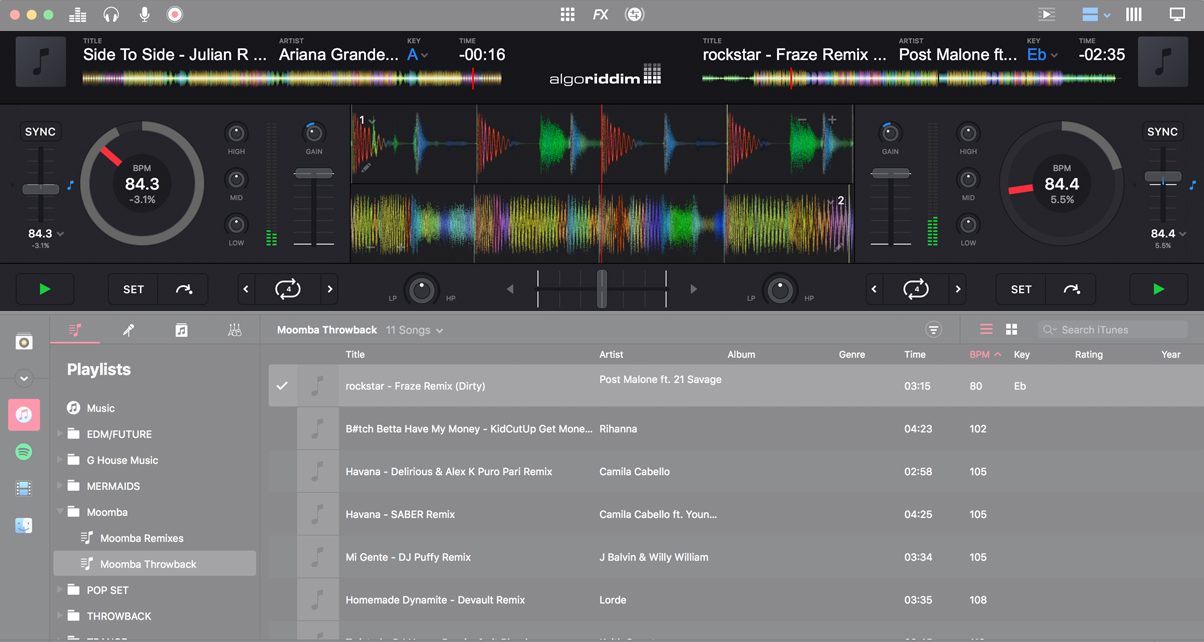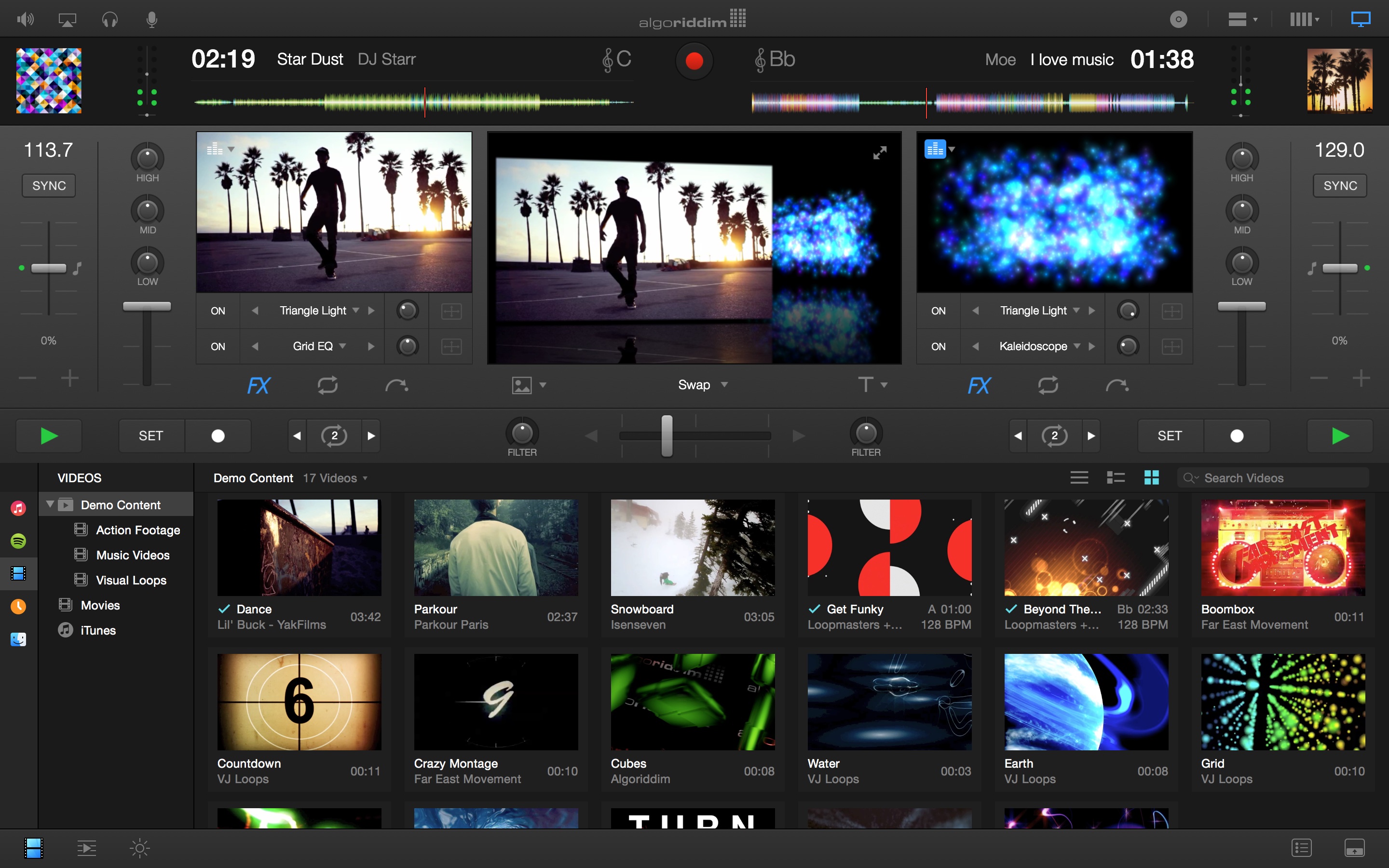


(Actually, drag and drop would have been nicer here.)
DJAY PRO 2 MAC REVIEW SOFTWARE
What’s more, you can add stuff to Spotify playlists directly from the software with a right-click context menu. Thanks to the fact that to use Spotify you have to be online, you now get access to Spotify’s current top 100, and are also able to get Echonest-powered recommendations of what to play next based on the currently playing track (doesn’t matter whether that track is from Spotify or your local collection). Think about that last bit for a bit: The world’s music, already key and BPM analysed… You still have your playlists, your songs, similar columns (Spotify doesn’t have a genre column, which is a shame, although you can sort by genre)… it’s basically nigh-on perfectly integrated, even with key and BPM information for every song in Spotify. The accomplishment here is that nothing else appears to change at all. Click the little iTunes logo bottom left and select “Spotify” instead and the subtle library graphics turn from red to green, to indicate you’re now in Spotify’s library.
DJAY PRO 2 MAC REVIEW UPDATE
One cool thing when you do choose to update something in your iTunes library, though, is that the second you do so, it changes in djay Pro – again, no importing or re-syncing or anything like that. Algoriddim informs us that it is fine to have iTunes open as well and flip between the two to do this, but it’s not ideal and fixing this would be welcome. It is a shame you can’t edit the track info inline, though, because often you see stuff you want to change when DJing.

With the library set to “daytime” mode and expanded, the app feels more like iTunes with a couple of DJ decks added – and effectively, in this mode, that’s what it is. That means you can have iTunes-specific tags like star ratings right there, which is a big plus, especially for those of us who use the ratings stars to tell us something about our tracks (“energy level”, in my case and that of many others DJs). Turns out, too, that the info you’re seeing (artist, etc) for each track is pulled right from iTunes’s database and not from the files’ ID3 tags. So assuming iTunes is a big part of your musical life, then, this is all good news. Why reinvent the wheel? But conversely, if you don’t use iTunes for organising your DJ music, I’d go as far as to say even at this stage that this probably isn’t the DJ software for you. Mac users, who generally have little or no resistance to using iTunes in their day to day lives, will feel this is how it should be – and I agree. Unlike most DJ software there’s no conscious/forced “importing” of tunes into djay Pro’s system to all intents and purposes, you’re just DJing with your iTunes library. Indeed, hit the little “expand library” button bottom right and the light/dark theme button next to it (to make the library area black-on-white), and it looks and feels like somebody’s just shoved a small DJing app over the top of your iTunes! Over other DJ software, iTunes integration is superior to all, bar none. Setting up audio interfaces is always a little bit of a head-scratcher for beginners (a bit like setting up printers on computers…), but it’s simple enough overall, and to be fair, the way it works in djay Pro is among the best of the lot. It was recognised immediately by the software, which auto-configured, so no worries there, but the audio didn’t auto-configure, and needed to be selected from a dropdown. Configuring the audio is done easily enough by a dropdown, but it would be good if it could happen automatically on plugging a compatible controller in. So I picked a modern controller that I know works well with djay on iOS (due to actually having been designed for it): The Reloop Beatpad. I’d actually played with the software without headphones or hardware at a party this weekend, but for the review I wanted to put it through its paces in a little more depth (it’s called “Pro”, after all!). On opening the software everything feels, actually, reassuring familiar to anyone who’s ever used djay on any platform: there are two very pretty if slightly kitsch Technics-style “turntables”, a few basic transport, looping and mixer controls, and a big, clean-looking lower section of the screen with the library in it. You buy it from the App Store, so it’s simple to get it downloaded and open on your Mac.


 0 kommentar(er)
0 kommentar(er)
